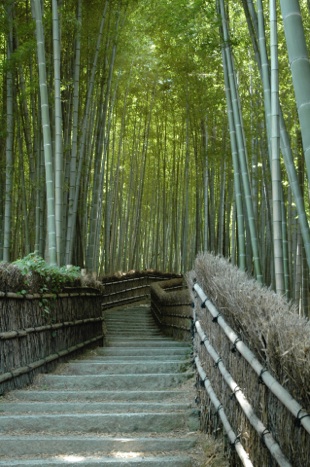ADGM609: Advanced Digital Media
The Urban Morphology of Kyoto and New Orleans
Course Introduction:
“Like many of the Creole houses, the facade presented a commonplace and unattractive aspect. The great green doors of the arched entrance were closed; and the green shutters of the balconied windows were half shut, like sleepy eyes lazily gazing upon the busy street below or the cottony patches of light clouds which floated slowly, slowly across the deep blue of the sky above. But beyond the gates lay a little Paradise. The great court, deep and broad, was framed in tropical green; vines embraced the white pillars of the piazza, and creeping plants climbed up the tinted walls to peer into the upper windows with their flower-eyes of flaming scarlet.”
Lafacdio Hearn, “Creole Court.” From The Diary of an Impressionist, Creole Sketches and Some Chinese Ghost. Houghton Mifflin Company, Boston and New York. 1922. 147.
“There is, alas, no lake view nor any charming prospect. Part of the O-Shiroyama, with the castle on its summit, half concealed by a park of pines, may be seen above the cop- ing of the front wall, but only a part; and scarcely a hun- dred yards behind the house rise densely wooded heights, cutting off not only the horizon, but a large slice of the sky as well. For this immurement, however, there exists fair compensation in the shape of a very pretty garden, or rather a series of garden spaces, which surround the dwelling on three sides. Broad verandas overlook these, and from a certain veranda angle I can enjoy the sight of two gardens at once. Screens of bamboos and woven rushes, with wide gateless openings in their midst, mark the boundaries of the three divisions of the pleasure-grounds.
Lafacdio Hearn, “Glimpse of Unfamiliar Japan.” Bernhard Tauchnitz, Leip- zig. 1910. 249.
The two excerpts describing the role of garden spaces in 19 century residential settings represent a nuanced and complex spatial, historical and cultural juxtaposition. Both were written by the same author in a similar prose some ten years a part in the opposite ends of the world. Lafcaido Hearn, a renowned author and one of the most famous Japanophile, spent 10 years as a journalist in New Orleans prior to moving to Japan at the age of 40 never to return. He dedicates the rest of his life to draw awareness to the beauty and tranquility of pleasing customs and lasting values of his adopted country at odds with the emerging western style materialism.

Ignoring the obvious nouns identified with the location and concentrating on the spatial relationships of Hearn’s remarks, the historical and geographical boundary becomes a blur, infinitely difficult to distinguish, transcending time and place. The goal of this study abroad studio is to re- contextualize the familiar by dislocating to the unfamiliar. Kyoto is a city steeped in tradition and cultural heritage outside of the typical western society. However it is com- parable in many ways to the city of New Orleans. Both cities possess an extremely rich cultural heritage and urban fabric. The striking historical, contextual, environ- mental and cultural parallels/contrasts between the two will be a potent source for inquiry and knowledge.
This course is designed to aid the inquiry by providing student with analytical tools, methods and references for rigorous architectural comparison of traditional and modern urban residential buildings. The project will consist of 2-D, 3D graphic representations and research texts comparing / contrasting urban residential buildings in New Orleans and Kyoto.
Adashino Nenbutsuji / Arashiyama, Kyoto ©Tsubaki
